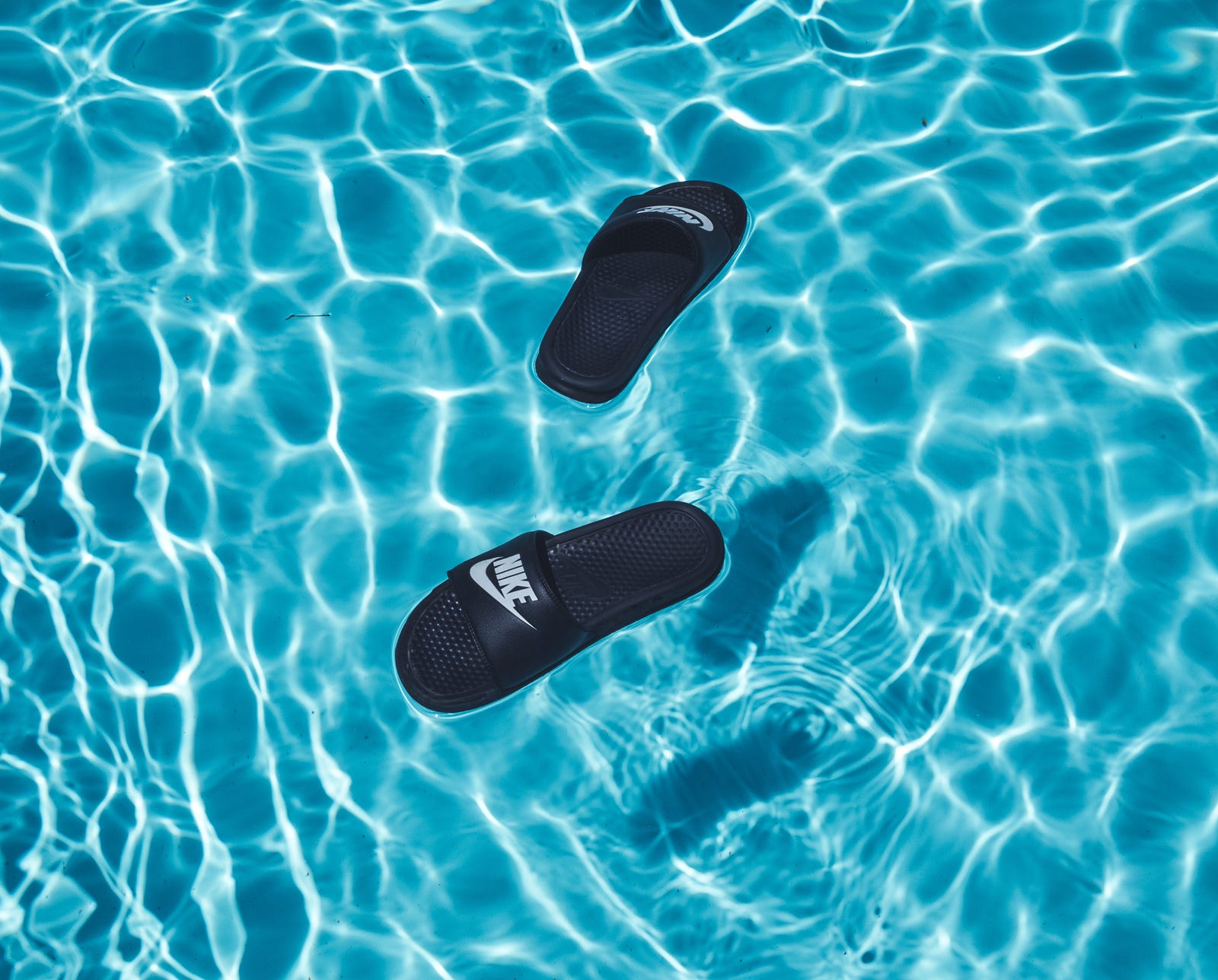DO YOU WEAR SHOES ALL DAY LONG, including slippers when indoors? Are you delighted with the fancy new shoes that give you more support? Am I right in assuming that shoe cushioning reduces my injury risk? Today we explore running shoes and injury.
“The human foot is a masterpiece of engineering and a work of art. — Leonardo da Vinci
I considered optimizing my shoe support when I recently looked for a new pair of kicks.

I spied this modern-appearing on the feet of one of my staff members as she walked into the office.
On the Internet, I saw descriptors like “Early stage MetaRocker™” and “inherently stable geometry.”
I have never seen more cushioned shoes. And almost everyone with whom I talk about the Hoka brand is quite pleased with their shoes.
Does Cushioning Your Feet Weaken Them?
I wear shoes to go to work and walk around the office in loafers. I take morning, mid-day, and evening strolls in comfortable tennis shoes.
The heavily cushioned shoes are appealing to me, at least at first glance. Under-foot padding will likely reduce the impact forces on my tissues and joints. Right?
But is constantly my feet in shoes progressively making my feet more weak? Am I depriving my feet of the chance to work?
The more cushioning a shoe possesses, the harder and more damaging to our joints it may be. Theoretically.
Why Might A Lot of Shoe Cushioning Bad?
Why might wearing shoes with too much shoe cushioning be a bad idea?
Listen to Dr. Emily Splichal, a functional podiatrist in Chandler, Arizona (USA). Writing for the American Association of Retired Persons, she explains it this way:
“Our toes need to push into the ground to maintain balance, and our foot muscles contract to maintain balance and posture. Supportive shoes and insoles do the bulk of the work instead of the feet themselves.”
Moreover, thick and cushiony soles can rob our feet’ bottoms from critical sensory stimulation.
Our Feet and Brain Transmit Information Bidirectionally
The brain and feet transmit information back and forth to optimize:
- Posture
- Balance
- Avoiding falls
Again, Dr. Splichal: “Part of your nervous system lives in your feet — thousands of nerves that are sensitive to texture, pressure, vibration and other stimuli.”

If you always wear shoes, your brain will practice these essential skills less. Furthermore, as our feet lose sensitivity in our 40s, they need more stimulation to elicit the same brain response.
With less foot support, our toes push into the ground to maintain balance. Our muscles contract to support balance and posture. Supportive shoes and insoles can do much of this work rather than letting your feet do it.
Intellectually, this all makes sense to me. But am I wrong?
For example, do randomized trials support the notion that cushioning increases the risk of injury? The results may surprise you.
A Randomized Experiment Reveals An Answer
My view that lots of shoe cushioning might be harmful is off the mark, at least when it comes to injury.
Laurent Malisoux of the Luxembourg Institute of Health is the running shoe world’s leading advocate of placebo-controlled studies.
Malisoux’s new European Journal of Sport Science study addresses how soft shoe cushioning helps.
The French sports goods company Decathlon manufactured two shoe prototypes, each with an inch-thick layer of midsole cushioning made from EVA foam.
The company manipulated the chemistry of the EVA; half the shoes had soft cushioning while the other half had firmer foam. Researchers randomly assigned the shoes to 848 healthy runners.
All study participants had completed a treadmill test to assess their stride characteristics. The team monitored them for six months for signs of injury.
Shoe Cushioning Study Results: Soft is Better
The study revealed the following results:
Injury risk was greater in recreational runners who trained in the shoe version with greater cushioning stiffness (Stiff) than those using the soft version.
In 2020, the researchers reported that those using the firmer shoes were 1.5 times more likely to develop an injury during the follow-up period. The study results validated claims that soft cushioning reduces injury.
The future doctor will give no medication but will interest his patients in the care of the human frame, diet, and the cause and prevention of disease.
Final Thoughts — Shoe Cushioning Reduces My Injury Risk, Right?
This well-designed randomized trial helps clarify whether well-cushioned, soft-soled shoes reduce injury risk. The answer is yes.
Do you wear well-cushioned, soft-soled shoes? If so, for what activity? Do your shoes enhance your performance? Reduce injury risk?
The information I provided in this blog is for educational purposes only and does not substitute for professional medical advice.
Please consult a medical professional or healthcare provider for medical advice, diagnoses, or treatment. I am not liable for risks or issues associated with using or acting upon the information in this blog.
Thank you for reading “Running Shoes and Injury.”

























